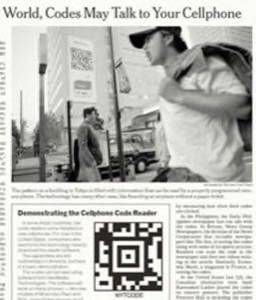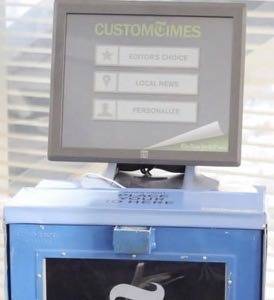Nick Bilton from The New York Times R&D Labs was at ETech today, talking about how NYT is preparing for the future of news delivery. His presentation explored how “sensors in every part of our lives [are] helping us aggregate smart content that is relevant to the device we are using”. Bilton said that New York Times is building out more real-time analytics, device detection and granular user interaction, in order to deliver this “smart content” to each user and device. They are focused on the “3 screen” experience: web, mobile, and living room. Bilton said that NYT is also exploring “Newspaper 2.0” and next generation e-ink devices (such as flexible displays).

Changes for mobile that NYT is looking at include optimizing for the increasing popularity of touch-screen devices (fueled by the iPhone) and adjusting content on mobile devices based on what the reader clicks on – e.g. if they click for sports news then they know the user is interested in that type of content.

Regarding sensors, these devices can be editors according to Bilton. For example if your phone has GPS, then your location can influence what content you see. Or if you’re in your car, your phone could sense that and so NYT could deliver the news to you in audio. It can also change the way NYT does reporting – for example sensors that pick up noise activity could alert reporters to noise problems in NYC (a common problem in that city).
Bilton said that NYT has also been experimenting with semacodes, bar codes in the newspaper – although he noted that it has issues, such as it not being understandable for many mainstream people. There are also e-ink and other interactive concepts being tested (example below).
CustomTimes interactive newspaper box, photo from NickBilton.com

Bilton then showed how if NYT was being ‘consumed’ in the living room, they can introduce much more video and use sensor metadata to add to the experience (for example showing content based on location). He also asked the question: why doesn’t my couch have an API? If NYT knew more about the people in the room, how close they are to the TV, etc, then NYT could customize the user interface and content even further.
He wrapped up by addressing the so-called death of the newspaper. Bilton argued that “paper is just a device”. He noted that the next generation will be used to accessing content immediately – there will be flexible displays, full immersive video and graphical experiences, more user-generated content. All of these things are just ways of storytelling, he said.
Based on this fascinating presentation, we can be sure that newspapers – at least ones with enough money to do this type of research – are far from dead if they evolve with and adapt quickly to technology. NYT is certainly one of the leaders in using technology in news reporting, so it appears to be well positioned.
Disclosure: RWW has a syndication relationship with NYT.










